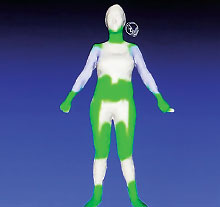Casual Video Games Might Ease Depressive Symptoms in Some Patients
A study conducted by researchers at East Carolina University suggests that casual video games (those commonly played on smartphones) might help some patients with treatment-resistant depression. The findings were published in the journal Games for Health.
In a month-long study, 49 adults with depression who had not responded to an oral antidepressant were given the choice of being prescribed an adjunctive antidepressant (n=23) or playing the video game “Plants vs. Zombies” for 30 to 45 minutes four times a week (n=26). Depressive symptoms were assessed using the nine-item Patient Health Questionnaire (PHQ-9) at four points over the course of the trial.
At the start of the study, the participants in the video game group played one game session in the clinic and took the PHQ-9 immediately after to assess acute treatment effects. As a comparison, the adults who selected a second antidepressant browsed a webpage with depression tips for 30 minutes.
After one month, the participants in the video game group showed significant improvements in their PHQ-9 scores (dropping from an average of 11.3 to 2.4), which was superior to the changes seen in patients in the second antidepressant group (dropping from an average of 12.8 to 7.6). Playing the video game also resulted in greater acute PHQ-9 reductions relative to web browsing.
“While replication studies are needed to confirm the findings, we conclude that a self-selected prescribed regimen of [“Plants vs. Zombies”] is an efficacious intervention for [treatment-resistant depression],” they added.
3D Mapping May Help Women Improve Body Image
Using 3D mapping technology can help improve perceptions of body image in women, according to a study published in Mental Health & Prevention.
Researchers at the University of Missouri studied the effects of an intervention called 3-Dimensional Body Appreciation Mapping (3D-BAM) on women. The technique involves using a body scanner to create a 3D digital avatar of a woman’s body. The woman then looks at the scan and “digitally” paints body parts she appreciates.
The study involved 158 women aged 18 to 25. At enrollment, all participants completed assessments on body image, depression, and anxiety and then scheduled a body scan and digital painting exercise. The women took the assessments again immediately after the intervention and again three months later.
The results showed that the body appreciation task improved self-rated body image and anxiety symptoms both in the short and long term. Depressive symptoms did not significantly improve, which the authors suggested might be because most participants had no depression or mild depression at baseline.
“Our results … suggest that this type of intervention may be useful in a variety of settings where body image improvement is the overall goal, including clinical settings, sexual education programs, and eating disorder treatment programs,” the researchers wrote.
History of Suicide Attempt Common Among Those with Eating Disorders
U.S. adults with a history of eating disorders were five to six times more likely to also have a history of suicidal behavior, compared with adults who did not have an eating disorder. The study findings were published in BMC Medicine.
To evaluate the link between eating disorders and previous suicide attempts, researchers from the University of Albany and Yale University School of Medicine examined data from over 36,000 adults who completed the Third National Epidemiological Survey on Alcohol and Related Conditions. As part of the survey, respondents answered questions about previous suicide attempts and history of eating disorders. Eating disorders included DSM-5-defined anorexia nervosa—both the restricting and the binge/purge subtypes—bulimia nervosa, and binge-eating disorder.
History of suicide attempts was significantly higher among those with a DSM-5-defined eating disorder—25% for those with anorexia nervosa, 31% for bulimia nervosa, and 23% for binge-eating disorder—versus 5% for those without an eating disorder. Among those with anorexia, 44% of those with the binge/purge subtype and 16% of those with the restricting subtype reported a previous suicide attempt.
“The prevalence of [suicide attempts] in our epidemiological sample was similar or greater than those reported for clinical samples. This is concerning as treatment utilization is very low among adults with diagnosable [eating disorders] in the general population,” the researchers wrote. “[R]outine screening for [eating disorders] along with [suicide attempt] history … could inform comprehensive treatment planning and appropriate treatment referrals.”
Nicotine Receptor Gene Linked to Cannabis Use Disorder
A multinational research team has identified a genetic variant that may increase the risk of cannabis use disorder (CUD). The variant is in a gene called CHRNA2, which encodes a protein that is a component of receptors upon which the neurotransmitter acetylcholine as well as nicotine bind. The findings by researchers at Aarhus University in Denmark and colleagues were published in Nature Neuroscience.
Analysis of the genomes of 2,387 Danish people with cannabis use disorder and 48,985 individuals without the disorder revealed those with CUD were more likely to have a variant of the CHRNA2 gene. A second analysis using an Icelandic cohort—5,501 people with cannabis use disorder and 301,041 controls—replicated this result. Variants of CHRNA2 have previously been linked with both nicotine dependence and schizophrenia risk.
Further analysis suggested that this variant leads to reduced expression of the CHRNA2 protein in the brain, primarily in the cerebellum.
“The cerebellum may play a role in addiction … and reward-anticipating responses,” the authors wrote. “The cerebellum [also] has high density of cannabinoid receptor 1, which mediates the effect of Δ-9-tetrahydrocannabinol, the psychoactive compound in cannabis.”
The investigators noted that further research is needed to see if CHRNA2 protein could be a therapeutic target for treating patients with CUD.
Youth Sexting Associated with Behavioral Issues, Substance Use
A meta-analysis published in JAMA Pediatrics reports that sexting during adolescence is associated with risky sexual behaviors, depression, and substance use. These associations were stronger in younger adolescents compared with older adolescents.
Researchers at the University of Calgary and colleagues combined 23 separate studies (including over 41,000 adolescents) that examined the association between sexting and sexual and behavioral outcomes. Such outcomes included engagement of sexual activity, number of sexual partners, contraception use, internalizing problems such as depression or anxiety, delinquent behavior, and use of alcohol or other substances.
The meta-analysis revealed that compared with teens who did not engage in sexting, teens who sexted were more than three times as likely to engage in sex, five times as likely to have multiple partners, and twice as likely to not use contraception. Among behavioral outcomes, teens who engaged in sexting were more than twice as likely to engage in delinquent behavior, almost twice as likely to have depression or anxiety, and more than three times as likely to use alcohol or drugs.
“Educational campaigns to raise awareness of digital health, safety, and security are needed to help youth navigate their personal, social, and sexual development in a technological world,” the authors concluded.
CGI Scale Can Be Useful for Sleep Apnea Patients
Sleep apnea severity is currently measured using objective data on the frequency of breathing disruptions (apnea-hypopnea index or AHI) and/or oxygen desaturation levels. The Clinical Global Impression (CGI) scale—a tool used to assess how a psychiatric disorder impacts a patient’s global functioning—may help rate the overall impact of obstructive sleep apnea on patients’ health status, suggests a study in Sleep Medicine.
Researchers from Sweden’s Gothenburg University examined data from the European Sleep Apnea Database (ESADA), a large study that is following sleep apnea patients at 30 sleep centers across Europe and Israel. As part of ESADA, eight of the participating centers conducted CGI assessments before and after treating patients.
The analysis showed that in general, CGI scores correlated well with AHI and oxygen desaturation levels, suggesting it could be a good complement to traditional tests to get a better sense of the disorder. However, for any given AHI or oxygen desaturation score, women reported higher CGI scores than men. Previous studies have shown that women with sleep apnea are more likely to experience adverse outcomes that affect their functioning such as headaches, insomnia, and depression.
Changes in CGI during treatment were a more accurate predictor of whether patients were using their continuous positive airway pressure (CPAP) machines than changes in apnea frequency or levels of daytime sleepiness, the authors noted. ■






